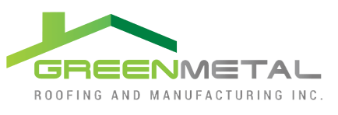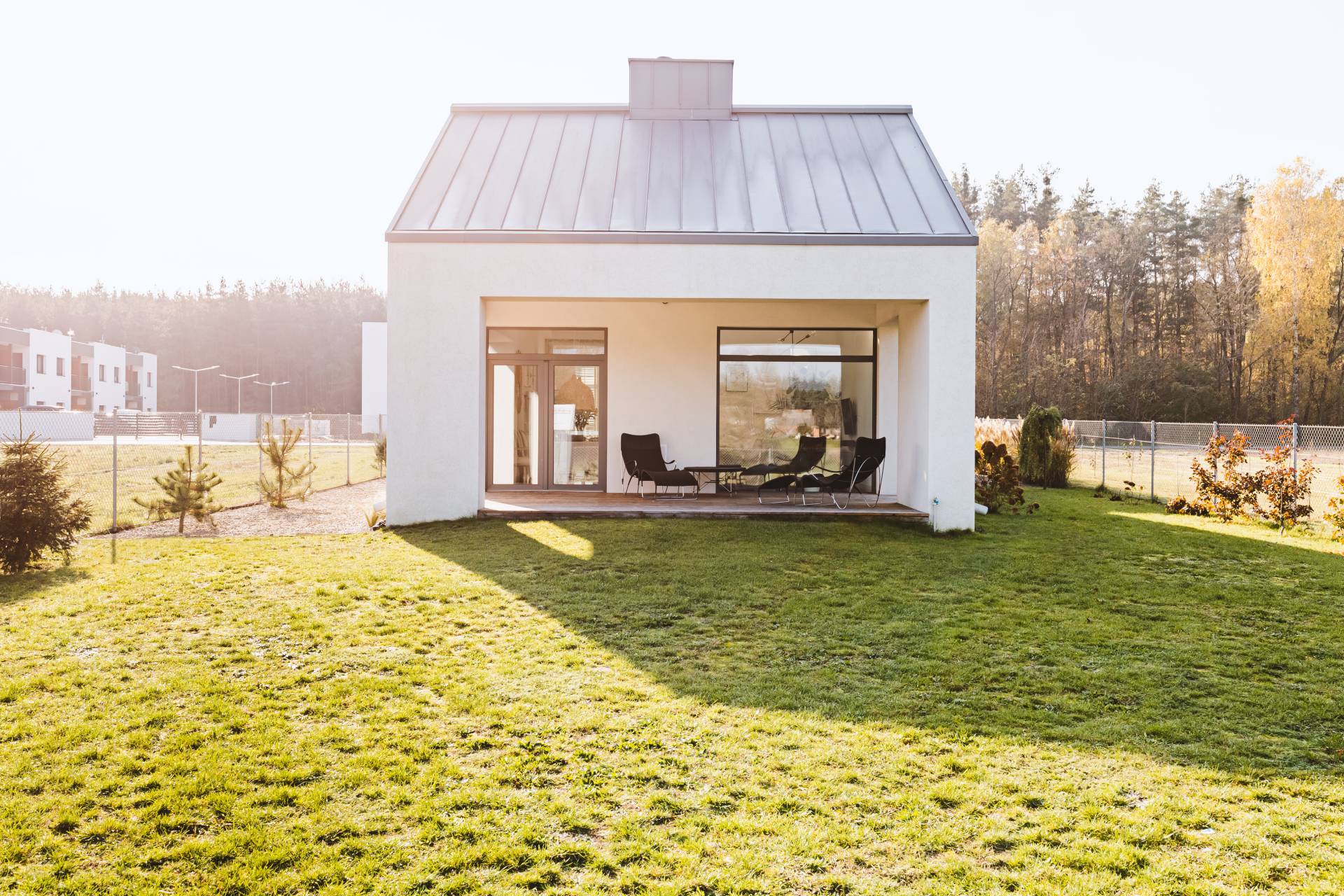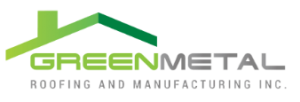For its durability, versatility, and low maintenance, a metal roof can be an excellent fit for your home. Metal roofing materials, such as steel, aluminum, and copper, are resistant to weathering, corrosion, and other forms of degradation. Metal roofs generally require minimal maintenance. They are resistant to common roofing issues, such as mold, mildew, and insect damage. Periodic inspections and routine cleaning are usually sufficient to keep a metal roof in good condition, saving homeowners time and money on maintenance. A well-maintained metal roof can last 50 years or more, making it a long-term and cost-effective investment. Metal roofs perform well in various weather conditions. If you are concerned whether a metal roof would suit your local climate, here are the ways metal roofing suit a variety of weather conditions:
Cold Climates
Metal roofing materials maintain their structural integrity even in extremely cold temperatures. They do not become brittle or susceptible to cracking. Metal roofs have smooth surfaces, which allow snow to slide off easily. This prevents the accumulation of heavy snow loads on the roof, reducing the risk of structural damage. The smooth surface of metal also helps in preventing the formation of ice dams, which occur when snow on a roof melts and refreezes at the eaves. Ice dams cause water to back up and can potentially lead to leaks. Metal roofs do not support the growth of mold and mildew, which can be common in cold and damp climates. This resistance helps maintain the roofs integrity and prevents issues related to moisture. Metal roofing systems are designed to be water-resistant and to prevent leaks. This is especially important in cold climates where melted snow and ice can lead to water infiltration. With the right type of metal and appropriate coatings, a metal roof can withstand the challenges of a cold environment.
Hot Climates
Metal roofs typically have high reflectivity, meaning they reflect a significant portion of the sun’s rays. They have high thermal emissivity, allowing metal roofing materials to release absorbed heat quickly. Metal roofs can be designs to allow for proper ventilation, which is crucial in hot climates. These properties prevent the roof from absorbing and retaining heat, keeping the building cooler and reducing the strain on air conditioning systems. Metals are durable and can withstand high temperatures without warping, cracking, or degrading. Metal roofing materials are resistant to UV radiation and sunlight exposure. They do not fade, chalk, or become brittle over time, maintaining their appearance and performance even in intense sunlight. This durability ensures that the roof can maintain its structural integrity in hot climates.
Humid Climates
Since metal roofs are not organic, they do not support the growth of mold and mildew. This property prevents the unsightly and potentially damaging effects of mold and mildew in humid conditions. High humidity levels can also accelerate corrosion in certain materials. Metals like aluminum and zinc are naturally resistant to corrosion, making them well-suited for humid environments. Metal roofing materials, such as aluminum and galvanized steel, can also be treated with coatings that enhance corrosion resistance. This protective layer helps prevent rust and corrosion, ensuring the roof’s longevity in humid climates. Metal roofs are non-porous, which prevents the material from retaining water and helps maintain the roof’s structural integrity. Metal roofs can withstand the challenges posed by high humidity, including exposure to moisture-laden air and occasional heavy rainfall.
Rainy Climates
Metal roofs can be installed with few or no seams, reducing the potential entry points for water. Metal roofs have a smooth surface that allows rainwater to easily slide off, preventing the accumulation of water on the roof. Unlike other roofing materials, metal roofs dry quickly after rainfall and do not retain water. With water resistant and non-porous properties, metal roofs do not provide a conducive environment for the growth of mold and mildew. These characteristics contribute to the roof’s longevity and reduces the likelihood of issues such as mold, mildew, and rot. Many metal roofing materials are resistant to corrosion. This resistance helps ensure that the metal remains durable and maintains its structural integrity despite exposure to rainwater. Proper installation, including the use of sealants and flashing, further enhances a metal roof’s water resistance. Routine inspections to ensure that gutters and drainage systems are clear are typically sufficient to keep the roof in good condition in rainy climates.
Wind-Prone Climates
Due to their inherent strength and design features that enhance their resistance to wind damage, metal roofs are well-suited for wind-prone climates. Metal roofing materials, such as steel and aluminum, are known for their structural strength and resilience. Metal roofs are generally more resistant to impact damage than other roofing materials. This quality is important in wind-prone areas where flying debris during storms can pose a risk to the roof’s integrity. The design of metal roofs, including their slope and profile, can contribute to wind resistance. Some metal roofing profiles are aerodynamic, allowing wind to flow over the surface without creating excessive uplift forces. Metal roofs are often secured to the structure with screws, providing a strong and secure connection. Many metal roofing systems feature interlocking panels that provide a continuous, secure surface. Metal roofs can be installed with few or no seams, reducing potential weak points where wind-driven rain or debris could penetrate. When properly installed, metal roofs can withstand high wind speeds and resist the uplift forces associated with strong gusts.
Mixed Climates
Metal roofs are versatile and can adapt to various climate conditions. Whether a region experiences hot summers, cold winters, or a combination of both, metal roofing materials can provide effective performance. The reflective properties of metal roofs can make them suitable for hot and sunny conditions. By reflecting sunlight and heat, metal roofs can keep buildings cooler in the summer, contributing to energy efficiency. Metal roofs can be designed to allow for effective ventilation, helping manage the heat buildup and humidity levels. During winter months, metal roofs excel in shedding snow and in preventing the buildup of heavy loads. This feature is crucial for maintaining the structural integrity of the roof. Metal roofs are durable and can withstand a range of weather conditions, including wind, rain, and hail. They do not support the growth of mold and mildew, making them suitable for climates where persistent moisture can be a concern. Metal roofs typically require low maintenance, making them suitable with regions with varied weather conditions.
The combination of durability, energy efficiency, low maintenance, and resilience to adverse weather makes metal roofs a popular choice among homeowners seeking a reliable and long-lasting roofing solution. Metal roofs offer various styles, colors, and finishes to suit different architectural preferences. A professional roofer can assist in selecting the right metal roofing material and design that complements your home. They can also provide valuable input on factors such as roof slope, insulation, and ventilation to optimize your roof’s performance in the local climate.
When it comes to metal roofing, proper installation is critical for its performance and longevity. Improperly installed metal roofs can lead to leaks, inadequate ventilation, and poor insulation. These issues can result in costly repairs and compromise the structural integrity of the roofing system. Generally, metal roofs are considered to be more complex to install than other roofing materials. A professional can ensure that the roof is installed according to industry standards, local building codes, and the manufacturer’s guidelines. Taking the time to find the find and work with the right contractor contributes to the success of the metal roof installation and your overall satisfaction with the roof.


